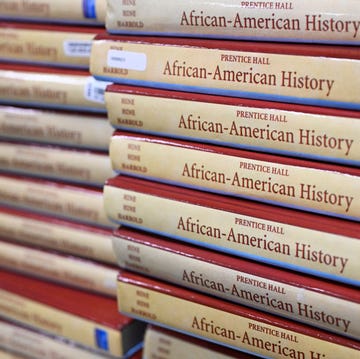It’s a sunny afternoon in northwestern France, and the most skilled and celebrated drivers in the world are gearing up for the most competitive endurance race of the season: 24 Hours of Le Mans. The eight-and-a-half-mile track is all that these drivers and their crews have seen for the last 10 days, and the surrounding paddocks and trailers have become home to them. But as more than 325,000 fans and spectators pour into the circuit and flood the grandstands, any sense of comfort quickly vanishes, and a palpable blend of anxiety and exhilaration takes its place. It’s the 100th anniversary of the legendary 24-hour race; every team has its horizons set on the special-edition centenary trophy, and they’re prepared to do whatever it takes to get it.
As the clock nears Le Mans’ 4:00 p.m. start time and the first shift of drivers climb into their cars and peel out of the pits to get into the first-lap lineup, one car in the GTE class seems to stand out from the rest. Among the 62 cars whizzing around the track at roughly 200 mph is a hot-pink Porsche so bright it can’t help but catch every spectator’s eye as it zooms past. But it’s more than just the color of this car that has the world watching—it’s also who’s behind the wheel: one of three Iron Dames, the first and only all-female team in endurance-racing history, dressed in hot pink.
Founded by entrepreneur and former racer Deborah Mayer in 2018, the team has always had one clear goal: to overcome the myriad challenges that female racers encounter in the male-dominated sport.
More From Harper's BAZAAR

Like so many drivers, Rahel Frey—who has been racing for the Iron Dames since the team’s conception—got her start through her father. A longtime motorsport fan, he urged Frey and her brother to take up go-karting as kids, and it was truly love at first drive. “I felt the speed, I felt connected to that machine, and from that moment on, I dreamed of becoming the next Formula 1 driver,” she remembers. “The only goal I had was to be the fastest, and it never fazed me that a girl couldn’t do that.” But when Frey’s racing reached the next level, she realized it wouldn’t be so simple.
At the time, there were almost no female drivers in the sport, and therefore no one to offer Frey the guidance and support that so many male drivers are accustomed to. “When I first started, about 20 years ago, it was very difficult to navigate, and there were really no female role models to look up to,” the 37-year-old Swiss driver says. “There simply wasn’t information on how to do it.” Frey found inspiration in French rally driver Michèle Mouton, the first woman to win a major title in racing. But as one of only a few female endurance drivers, she was forced to forge a path for herself—and for the women who would come after her.
One such woman was Frey’s teammate Sarah Bovy, who joined the Iron Dames in 2021. Just a few years younger than Frey, the now-34-year-old Belgian driver discovered her love of racing relatively late, despite growing up with a race-car driver father. “He had two daughters and was from the generation that thought girls could never do racing, so it wasn’t that he didn’t want it, but he never thought to have us try,” she explains. When Bovy stumbled upon a go-kart attraction at a local fair during her teenage years, though, her fate as a racer was sealed. Within weeks, she knew she wanted to be a race car driver.
But as Bovy explored competing on a professional level, she saw how high the financial barrier to entry was in racing, one of the world’s most notoriously expensive sports, and realized that to continue, she would need to convince sponsors to back her. “When you’re looking for that kind of money, sponsors want to be sure you share a common image with them,” she explains. “But the problem was, most of the brands who are in motorsport are very masculine—even if you had a brand like Nivea, they’d be advertising their men’s shaving cream, not a women’s moisturizer—and that was quite challenging as a 16-year-old girl looking for sponsorship.” So Bovy began looking to smaller brands she could relate to on a personal level, and make a case to for gender equality in racing.
Nearly two decades on, funding and sponsorship continue to be a challenge for many female racers, even as the sport attracts an increasingly female fan base. (Out of the $66 billion global sports marketing spend, less than 1 percent of it goes to women in sports.) But teams like the Iron Dames, who have received outsize support from both the series and its viewers, are proving how beneficial it can be for brands to put their money behind female drivers. Over the last year, the Dames have proven noteworthy not only as the singular all-female team in racing, but also as a team, full stop, defying their critics and taking podiums at several of the most competitive races. Others have taken note.
For the Heart of Racing, an Aston Martin team with cars in the IMSA, WEC, and SRO series, creating opportunity for a diverse range of drivers has always been a priority—but for much of its four-year history, those opportunities never seemed to extend to women. Last year, the team decided it was time to change that, holding its first-ever annual female driver shootout in November, during the offseason. The Heart of Racing invited nine racers, selected from over 100 applicants, to participate in the two-day shootout, where eventually two drivers would be named to join the team for the 2023 season in the SRO GT4 series.
“I think it’s so cool that they picked two of us and that I have another female teammate, because we can really relate to each other better than anyone else,” says Hannah Grisham, one of the two drivers selected. The 23-year-old racer grew up watching other female racers and never doubted she could do it, but if not for the Heart of Racing shootout, she wonders how long it would have taken for her to really get a footing. “Racing is extremely expensive, and there aren’t that many women in the sport to begin with, so an opportunity like this can really be the turning point,” Grisham says. “It definitely has been for me.”
Unfortunately, the obstacles facing female drivers don’t stop once they’ve entered the sport. Ashton Harrison, a 29-year-old Acura driver and one half of the 2022 championship-winning SRO team, says being a woman has at times subjected her to aggression from male drivers, both on and off the track. “If I’ve out-qualified these guys, they’ll often go out of their way to be rough on me or take me out from the start [of the race],” she explains. “But I know to never show my emotions on the track, even when I see some of the men crying. I’ve always gone with an ‘I’ll treat you how you treat me’ approach, so as soon as they punt me off track, I’ll punt them off track. It’s all about gaining their respect and showing that you won’t let them push you around.”
During her nearly 10-year racing career, Harrison has also seen female drivers continuously pitted against each other. This has been the case in both her SRO class, where two out of 17 drivers are women, and her IMSA class, where three out of 35 drivers are. “Where we qualify is the first thing people look at, not the other 15 men or the 32 men. It’s always ‘Who’s the highest-qualified female?’” she says. “So, even though we’re not all trying to beat each other any more than we’re trying to beat the other cars, it breeds this sense of competition between the individual racers instead of the teams, and it makes it easier for the men to dismiss us.”
Samantha Tan, a 25-year old SRO driver and owner of Samantha Tan Racing, has similarly noticed how the racing world—including the media reporting on it—treats her differently. “Any mistake I make on the track often leads to critics attributing the error to my gender, throwing around phrases like ‘typical woman driver’ or ‘It’s because she’s a girl,’” she says. “In contrast, when my male counterparts falter, their actions are often dismissed as having a bad day or simply being poor drivers. There’s no sweeping generalization, as there is for female drivers.” Tan has also been on the receiving end of no shortage of misogynistic comments and hate, with some critics evaluating her worth as a driver based on her appearance rather than the level she competes at.
As one of only a few female team owners in racing, however, Tan feels she has a unique opportunity to shape the future of racing for women, and to mitigate some of the challenges she herself has faced. “I’m not only able to make key decisions that directly shape my team’s trajectory, but I’m also in a position to challenge the status quo within the broader industry. My status as a female team owner in itself serves as a strong message about shifting gender dynamics in motorsport,” she says. “I hope that the success of our team serves as a beacon, encouraging more women to enter and thrive in this sport, whether it’s as drivers, engineers, strategists, or team owners.”
Even as female drivers, crew members, and team owners become less of an anomaly, though, the women in racing today know that simply being there isn’t enough—they must also be competitive. “It can’t just be for marketing; you have to really know what you’re doing and be prepared to win,” the Iron Dames’ Frey says. “That’s the only way people will understand what you’re trying to do and will realize females can be successful in motorsport. They have to see it to believe it.”
It’s this mentality that Frey and the rest of the Iron Dames team took with them to Le Mans earlier this month, never doubting for a second they would perform well. And as competing cars dropped left and right throughout the race’s 24 hours, leaving less than half of the GTE class remaining, the hot-pink Porsche stayed in the lead for more than 12 hours. It appeared the Iron Dames’ dreams of success would soon become reality. Even as the car fell back to fourth place on the final lap, after an unexpected pit stop, the Dames crossed the finish line knowing they had made history. The sport had turned pink.

Gabby Shacknai is a New York-based journalist and editor who produces high-quality content for a wide variety of outlets and brands across various industries.

















